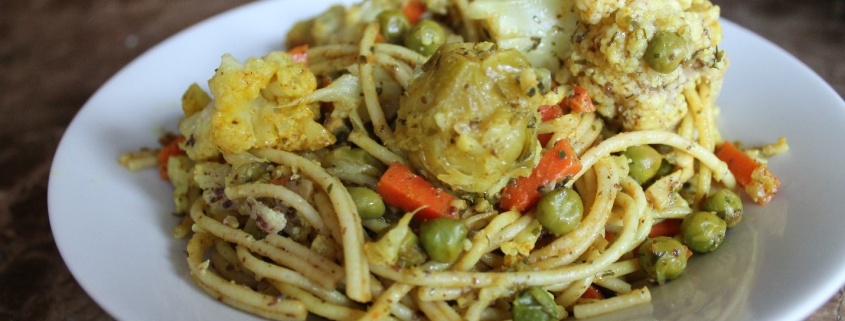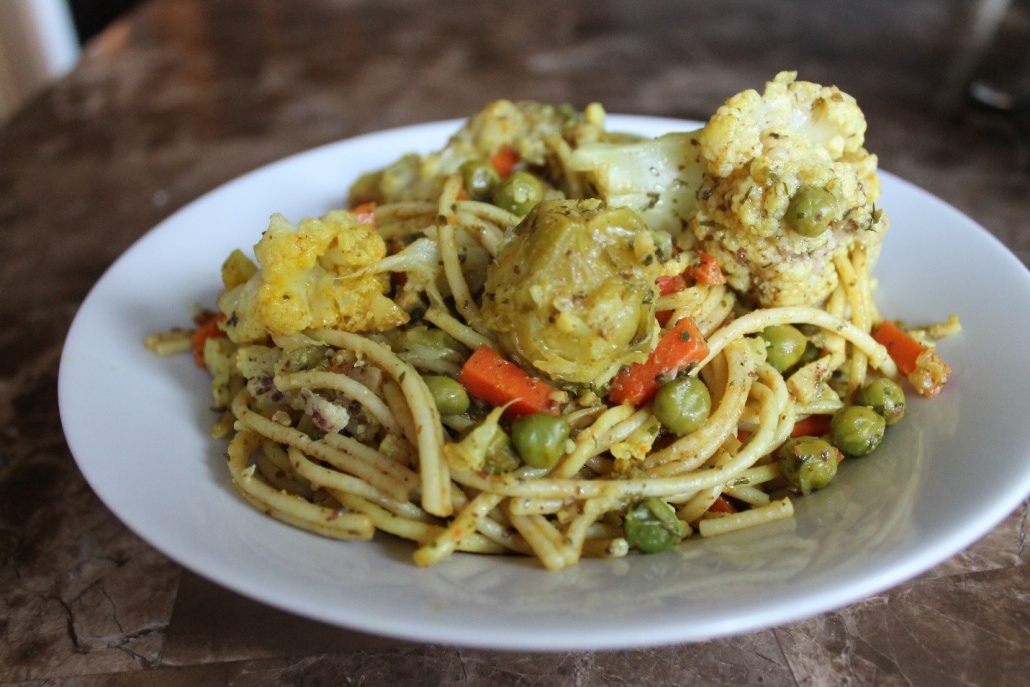Got pasta?
By Noor H. Salem
I have to admit, prior to dealing with my clients, I was oblivious of how much of a comfort food pasta is to many. While it’s easy to make, possibly fun for some to eat, and cheap, it’s not the healthiest food to be putting inside your body. I had a client show me her pantry stocked up on canned pasta and ravioli, and shared with me that it’s one of the main items they enjoy for dinner. Many others rely on ready pasta kits that come out of boxes, or even those sold in delis. Honestly, pasta can be made at home in a short period of time, with very healthy ingredients.
The popularly sold and consumed pastas are most likely derived of bleached and highly processed flour. It’s stripped of the nutrients, and many are enriched with vitamins. These white pastas are also very low in fiber, thus causing you to not feel satisfied. Pastas that are not labeled 100% whole grain may cause your blood sugar to spike, keeping you feeling hungry, despite how much you eat.
Pasta sauces may include high fructose corn syrup, a ton of added sugar, artificial flavors, and preservatives. If you’re consuming your pasta from a restaurant, that makes it even more difficult to investigate those ingredients. The majority of restaurants use lower quality ingredients, and won’t be serving you organic or made from scratch pasta sauce.
Lastly, pastas may be full of soybean or other vegetable oils, a high serving of cheeses, and factory farmed meat. It’s best to limit pre-made or restaurant pastas, and be informed of better options. Ask the restaurant for 100% whole grain pastas, go easy on the cheese, and try getting ones full of vegetables to aid in satiety.
When it comes to restaurants, aside being wary of the ingredients watch out for the large portions. Many restaurants have dishes so large; your fork just swims in the plate before hitting the bottom. Since white pasta is a simple carbohydrate, your blood sugar spike might cause you to still feel hungry, thus causing you to reach for more to eat. I frankly advise my clients to choose whole grain pastas when possible, and many restaurants provide that option. At the end of the day, I cannot be more convinced that no restaurant can compare to a home cooked meal. You’ll be aware of the quality of the ingredients, and what goes in your meal too. Plus, the majority of restaurants may toss in ingredients you’d never find in your kitchen cabinet.
One thing I’d like to bring to your attention is the fad of gluten free pastas. While yes, in fact there are many clients I’ve dealt with who are gluten intolerant or have celiac disease, be wary of your labels. If a pasta is labeled gluten free, it does not automatically guarantee you it’s a health food. In fact, I had a client come in excitedly with a box of pasta that was gluten free. The fact of the matter is, it was full of genetically modified corn. Yes, corn is gluten free, but unless that box of gluten-free pasta is labeled organic, I’d avoid it if I were you.
So what’s the best way to eat pasta? Well, it’s best to eat it at home of course. Here is a recipe that won the hearts of my clients, bursting in flavor, fiber, and nutrients. This pasta can be made using organic brown rice pasta, which is naturally gluten free. You can replace it with other organic pasta if you are gluten tolerant.
The cruciferous vegetables in this dish are extremely high in Vitamin K and fiber. They are low in calories, yet are extremely filling. They’re definitely a wonderful combination with pasta. The extra virgin olive oil provides a healthy fat, granting you satiety atop the burst of flavor. The lemon juice adds Vitamin C, B6, folate, and many other vitamins. This pasta is high in fiber, and carries anti-inflammatory properties, too. The turmeric is the perfect spice, not just for the coloration, but because it carries dozens of health benefits. Turmeric contains anti-inflammatory properties, anti-cancer properties, reduces the risk of Alzheimer’s, reduces joint pain, is great for your liver, heart health, and much more. Be sure to use Himalayan pink salt or unrefined celtic salt to get the natural minerals, without the bleach and anti-caking chemicals in commercial salt.
Try this recipe, and you’ll never go back to canned, boxed, or deli pasta again.
Ingredients:
1 pack organic brown rice pasta (or any organic pasta you desire)
4 cups cauliflower, cut
2 cups frozen Brussel sprouts
2 cups frozen peas
3 carrots, finely chopped
1/3 cup Extra Virgin Olive Oil
¼ cup lemon juice, freshly squeezed
2 tablespoons Himalayan Pink Salt
1 tablespoon turmeric, ground
½ teaspoon mustard seed, ground
1 teaspoon sumac
Directions:
Cook the pasta according to the package, for about 10 minutes.
Steam all the vegetables for about 15 minutes, or until tender. Place in a large bowl.
In a small mixing bowl whisk remaining ingredients. Pour over vegetables.
Drain the water from the pasta and add to the bowl. Toss well.
Serve warm.
Editor’s Note: Noor Salem is a Certified Integrative Nutrition Health Coach, and is CEO of her own wellness practice, Holistic Noortrition, LLC. Noor specialized in women’s health, weight loss, and food intolerance versus allergies. She offers individual and group health coaching programs, and is a speaker on the topic of holistic health at workshops and seminars. The views expressed here are her own. Noor recently published her book, SUNNAH SUPERFOODS, with numerous health tips, recipes, and prophetic remedies. Her views are her own.
18-1


















2016
1,295 views
views
0
comments